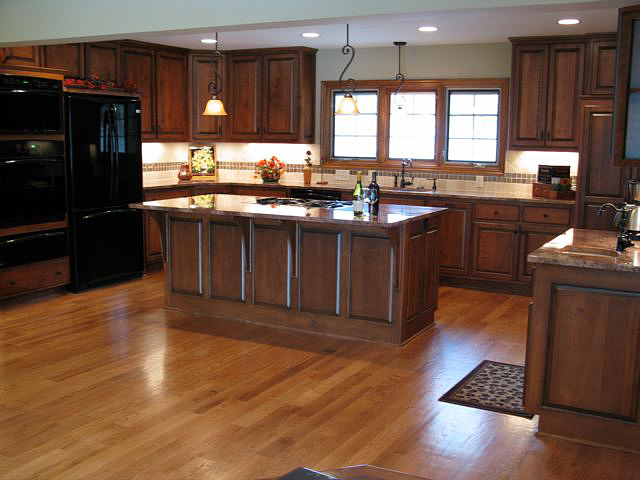Search for topics or resources
Enter your search below and hit enter or click the search icon.
September 4th, 2023 | 2 min read

After your home remodel is finished and you start seeing cracks in your fresh wooden surfaces, it can raise some concerns. But fear not – these cracks aren’t a sign of bad work or faulty lumber. Cracks and splits are part of wood’s natural life cycle.
Let’s dive into some key terms to help you understand what’s going on:
The main reason for cracks and splits in woodwork is changes in moisture levels. As the lumber gets used to its new surroundings, it tries to match the moisture around it. While drying, shakes and checks can appear as the lumber dries from its core. Over time, these imperfections get smaller as the lumber and the environment find a balance.
Cracking is a natural occurrence that typically doesn’t lead to severe problems. In fact, it can enhance the wood’s structural integrity by releasing tension and pressure through shrinking.
There are many ways you can prevent your wood from cracking depending on how you treat the lumber and the type. However, the most effective solution is to make sure your home is at a proper humidity level. In our opinion, the best way to do this is to use a humidifier. You could set up several small units throughout the house, but that’s not very efficient. The best way to do this is to use a whole home steam humidifier.
This device connects to your furnace and monitors indoor humidity levels. When humidity falls too low, it emits steam into the ventilation system to maintain 40-50% humidity. This solution offers several benefits, including reduced chances of cracking in your new woodwork. We recommend the Aprilaire Whole House Steam Humidifier to our clients.
New trim and cabinets are most susceptible to cracking, and they’re often the pricier components of a project. To safeguard your investment, maintaining a proper humidity level of around 40% within your home is essential. In summer, air conditioners usually reduce humidity effectively. However, modern furnaces tend to heat the home using dry air. When we speak to clients about this issue, we find that their homes are at a level of 20% or below in winter. Such dramatic humidity fluctuations can spell trouble for woodwork.
Wood cracking is a natural process when moisture changes. In most projects, splits or cracks in the lumber are minor issues. The quality of your wood will help but will not eliminate the problem. However, these issues can become more serious if you leave them unaddressed. If the humidity in your home is too low, a steam humidifier will not only help protect your investment but also give you a more comfortable and efficient house.
As you prepare for a remodel, it is essential to research every aspect of your project. To learn more about the problems common in remodeling, or other products we recommend, visit the RWS learning center.
About the Author Ray Stillions is the owner and operator of RWS Enterprises. He is a licensed and insured contractor with a BS degree from Pittsburg State University and has lived in the Kansas City area for over 35 years.